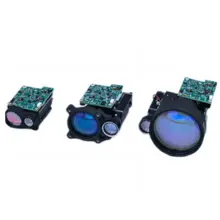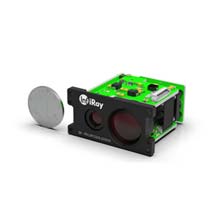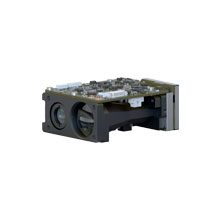What is a Thermal Imaging Camera? How does it work?

Imagine having the power to see the invisible, to witness the heat signatures of objects and creatures around you. Thanks to thermal imaging cameras, this futuristic ability is now a reality. In this blog, we're going to delve into the captivating world of thermal imaging cameras, exploring what they are, how they work, and their fascinating applications. So, let's embark on this thermal adventure!
What is a Thermal Imaging Camera?
To kick things off, let's define what a thermal imaging camera is. It's like a special pair of glasses that reveal the world in a completely different way – through heat. Unlike our eyes, which perceive visible light, thermal cameras detect infrared radiation, a type of energy that everything emits, based on its temperature.
Thermal imaging cameras have come a long way since their inception. They have now found their way into various industries, offering a unique perspective on the world around us.

How Does a Thermal Imaging Camera Work?
Now that we know what they are, let's uncover the magic behind these cameras.
1. Basics of Thermal Radiation
Think of the electromagnetic spectrum as a rainbow of light. On one end, you have visible light, the kind our eyes can see. On the other end lies infrared radiation, which is invisible to us. But it's not invisible to thermal cameras. Everything, from a cup of hot coffee to a chilly igloo, emits infrared radiation, and thermal cameras pick up on this thermal glow.
2. The Role of Infrared Detectors
At the heart of a thermal imaging camera are infrared detectors. These detectors, like microbolometers or thermopiles, are akin to the camera's eyes. They capture the incoming infrared radiation and convert it into electrical signals.
Here's the magic part: the detectors can sense temperature differences as small as a fraction of a degree Celsius. This ability allows thermal cameras to create detailed temperature maps of the scene they're observing.

3. Image Formation and Display
Okay, we've captured the infrared radiation, but how do we turn it into a picture?
The camera's brain processes the electrical signals from the detectors and assigns different colors or shades to represent various temperatures. This results in a thermal image, where hot spots appear as bright colors, and cooler areas appear darker.
Key Components of a Thermal Imaging Camera
Now that we know how they work, let's dive deeper into the essential components of a thermal imaging camera.
1. Lens and Optics
The lens plays a critical role in focusing the incoming infrared radiation onto the detector array. Different lenses are available for various applications, allowing users to choose between wide-angle views or more detailed close-ups.
2. Detector Array
The detector array is made up of countless tiny detectors, often referred to as pixels. The more pixels, the higher the resolution of the thermal image. High-resolution images can reveal finer details, making them ideal for tasks like building inspections or wildlife monitoring.
3. Image Processing and Analysis
Modern thermal cameras come equipped with powerful image processing algorithms. These algorithms enhance image quality, reduce noise, and even enable features like digital zoom or image fusion, where thermal and visible light images are combined for even more comprehensive insights.

Applications of Thermal Imaging Cameras
The applications of thermal imaging cameras are as diverse as the colors in a rainbow. Here are just a few examples:
1. Industrial and Manufacturing
In industries like electrical and mechanical maintenance, thermal cameras can detect overheating components before they fail, preventing costly downtime.
2. Building Inspection and Energy Efficiency
Thermal imaging helps identify heat leaks in buildings, making them more energy-efficient and cost-effective.
3. Enforcement and Security
Enforcement agencies use thermal cameras for surveillance, search, and rescue missions. Suspects can't hide in the dark when thermal cameras are on the case.
4. Medical and Healthcare
Thermal imaging aids in diagnosing various medical conditions by visualizing temperature differences in the body.
5. Environmental Monitoring
Biologists and ecologists use thermal cameras to study animal behavior, track elusive wildlife, and monitor environmental changes.
6. Search and Rescue Operations
In emergencies, thermal cameras can locate missing persons by detecting their body heat, even in challenging conditions.

Advantages and Limitations of Thermal Imaging Cameras
Now, let's weigh the pros and cons of these remarkable devices.
Advantages:
· Night Vision: Thermal cameras allow us to see in complete darkness.
· Detecting Abnormalities: They can spot heat anomalies, making them invaluable for preventative maintenance.
· Non-Contact Temperature Measurement: You can measure temperatures from a distance without physical contact.
Limitations:
· Limited Spatial Resolution: Thermal images may lack the detail of visible light images. But InfiRay infrared tech can provide the Megapixel Flagship Android Thermal Camera for the industry.
· Environmental Factors: Factors like rain and fog can affect thermal imaging performance. But the development of infrared tech, and thermal cameras can do better than before in adverse climates.
· Cost Considerations: High-quality thermal cameras can be expensive.

Recent Technological Advances
As technology marches forward, so do thermal imaging cameras. Recent innovations include smaller, more affordable cameras for smartphones, improved image processing, and integration with other technologies like drones.
In the world of thermal imaging cameras, we've uncovered a realm where heat tells the story. These remarkable devices have found their way into various industries, offering a unique perspective on the world. From industrial maintenance to search and rescue missions, thermal imaging cameras continue to illuminate the unseen, helping us navigate the challenges of our modern world.

















